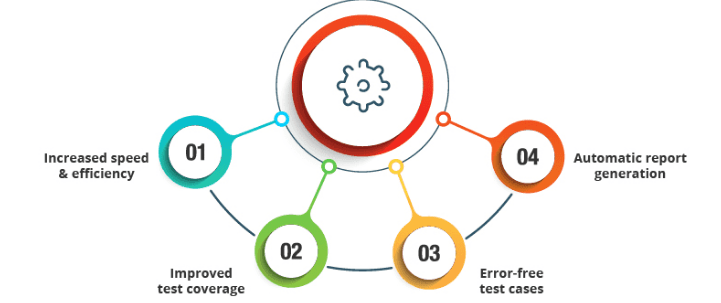
- Introduction to Test Classes
- Importance of Test Classes in Salesforce
- Anatomy of a Test Class
- Test Methods and Assertions
- Test Data Creation Using @testSetup
- Code Coverage Requirements
- Using Test.startTest() and Test.stopTest()
- Testing Triggers with Test Classes
Introduction to Test Classes
In Salesforce, Test Classes are a vital component of the Apex programming framework, designed to validate the functionality and reliability of Apex code. These classes simulate real-world scenarios by creating test data and executing code in a controlled environment to verify that it behaves as expected. By running test classes, developers can identify bugs, errors, and unintended side effects before deploying code to production, thereby minimizing the risk of issues affecting live users. Salesforce Training emphasizes that Salesforce enforces a strict requirement that at least 75% of Apex code must be covered by test classes before deployment to production. This mandate ensures that a significant portion of the code has been exercised and tested, promoting higher quality and more robust applications. Test classes not only confirm that code performs correctly but also help uncover performance bottlenecks and edge cases that might otherwise go unnoticed. Moreover, test classes facilitate ongoing maintenance and upgrades by providing a safety net that alerts developers if new changes introduce regressions. They are an essential best practice for achieving reliable, scalable, and maintainable Apex code. By investing time in creating thorough test classes, organizations enhance overall system stability and user confidence in their Salesforce implementations.
To Earn Your Salesforce Certification, Gain Insights From Leading Data Science Experts And Advance Your Career With ACTE’s Salesforce Training Today!
Importance of Test Classes in Salesforce
Test classes in Salesforce are critically important for ensuring the quality, reliability, and maintainability of Apex code. They serve as automated checks that validate whether the code behaves correctly under various conditions, simulating real-world scenarios without affecting live data. By running test classes, developers can identify bugs, logic errors, and unexpected behaviors early in the development cycle, which helps prevent issues from reaching production environments. Salesforce Commerce Cloud requires a minimum of 75% code coverage by test classes before Apex code can be deployed to production, emphasizing the platform’s focus on code quality. This requirement ensures that most of the code is tested and less prone to failures. Test classes also provide confidence during updates and deployments by catching regressions or unintended side effects caused by new changes. Beyond code coverage, test classes improve overall system stability by validating integrations, triggers, and workflows.

They help optimize performance by highlighting inefficient code or resource-intensive operations. Additionally, test classes document expected system behavior, making it easier for teams to understand and maintain complex codebases over time. In summary, test classes are essential in Salesforce development for delivering robust, scalable, and error-free applications, reducing risks, and supporting continuous improvement and innovation within the platform.
Anatomy of a Test Class
- Code Coverage and Best Practices: Well-written test classes aim to cover at least 75% of the Apex code and include both positive and negative test cases for thorough validation.
- Class Declaration: A test class is declared using the @isTest annotation, which marks it as a test-only class that won’t count against Apex code limits and cannot be called from production code.
- Test Setup Method: Optional but recommended, the @testSetup method creates common test data that is shared and reused across all test methods in the class, improving efficiency and reducing redundancy.
- Test Methods: These are individual methods annotated with @isTest or declared as static void within the test class. Each method tests specific functionality and runs independently, which is essential in the Sales Process in Salesforce.
- Data Creation: Test classes include code to create or simulate data relevant to the functionality being tested. This ensures tests are self-contained and don’t rely on existing org data.
- Use of Assertions: Test methods contain assertions like System.assert(), System.assertEquals(), and System.assertNotEquals() to validate that the actual results match expected outcomes.
- Governor Limits Handling: Test classes often use Test.startTest() and Test.stopTest() to reset governor limits and properly test asynchronous operations, ensuring realistic execution scenarios.
- Test Methods: Test methods are special Apex methods annotated with @isTest that are designed to verify the behavior of Apex code. They run in a separate test context, ensuring no impact on live data.
- Isolation: Each test method runs independently and has its own governor limits and test data, which helps maintain test accuracy and prevents interference between tests.
- Test Data Creation: Salesforce Training teaches that test methods typically create their own test data to simulate different scenarios. Using @testSetup methods can help create common data shared across multiple test methods.
- Assertions: Assertions are statements within test methods that validate expected outcomes by comparing actual results against expected values. Common methods include System.assert(), System.assertEquals(), and System.assertNotEquals().
- Purpose of Assertions: Assertions ensure that the code produces the correct results and behaves as expected under various conditions, helping detect logic errors and bugs.
- Positive and Negative Testing: Effective test methods use assertions to check both successful scenarios (positive tests) and failure or exception conditions (negative tests), ensuring robust code validation.
- Best Practices: Writing clear and precise assertions improves test clarity and maintainability, making it easier to diagnose issues when tests fail and ensuring higher code quality.
- Test Execution: Code coverage is measured by running test classes that execute the Apex code. Uncovered lines are those never executed during these tests.
- Coverage Calculation: The percentage is calculated by dividing the number of executed lines by total lines of code in the class or trigger.
- Exceptions: Test classes themselves and certain setup classes do not require coverage. Also, methods annotated with @isTest are excluded from coverage calculations.
- Best Practices: Salesforce Sandbox Explained highlights that writing efficient and meaningful test methods that cover positive and negative scenarios helps increase code coverage and improves code quality.
- Minimum Coverage Threshold: Salesforce mandates a minimum of 75% code coverage for Apex classes and triggers before they can be deployed to production. This ensures most of the code is tested for reliability.
- Overall Org Coverage: Besides individual classes, Salesforce requires that the total code coverage across the entire org is also at least 75%, promoting comprehensive testing across all Apex code.
- Limitations: High code coverage does not guarantee bug-free code. It’s important to write tests that validate logic correctness, handle edge cases, and simulate real-world conditions, ensuring code behaves as intended.
To Explore Salesforce in Depth, Check Out Our Comprehensive Salesforce Training To Gain Insights From Our Experts!
Test Methods and Assertions

Test Data Creation Using @testSetup
In Salesforce Apex testing, the @testSetup annotation plays a vital role in optimizing test data creation for multiple test methods within a test class. When using @testSetup, a single method is designated to create test data that is shared across all test methods in that class. This approach helps reduce redundancy, improve test execution speed, and maintain consistency in test scenarios. Amazon Web Services Salesforce integration benefits from the @testSetup method, which runs once before any test methods execute, creating reusable records that are available to all tests in the class. For example, if multiple tests require the same Account or Contact records, these can be created in the @testSetup method, avoiding duplicate data creation in each individual test method. This not only saves processing time but also ensures that all tests run against the same baseline data, making results more reliable and easier to compare. Using @testSetup also helps keep test methods focused on testing specific logic rather than data creation. This leads to cleaner, more maintainable test code. However, test methods cannot modify data created in the @testSetup method, ensuring data consistency. Overall, @testSetup is a best practice in Salesforce Apex testing, promoting efficient, scalable, and organized test data management while improving test class performance.
Do You Want to Learn More About Salesforce? Get Info From Our Salesforce Training Today!
Code Coverage Requirements
Using Test.startTest() and Test.stopTest()
In Salesforce Apex testing, Test.startTest() and Test.stopTest() are crucial methods used to control and optimize the execution context of test classes. These methods help isolate specific sections of code within test methods, ensuring more accurate and reliable testing, especially when dealing with governor limits and asynchronous operations. When Test.startTest() is called, it resets the governor limits for the subsequent code block, providing a fresh set of limits. This is important because test methods often perform setup tasks before the actual code under test is executed, consuming limits prematurely. Types of Flow in Salesforce include best practices such as wrapping the key execution logic between Test.startTest() and Test.stopTest(), which ensures that the tested code has the full allocation of resources, mimicking real-world execution conditions more closely. Additionally, Test.stopTest() helps synchronize asynchronous operations such as future methods, batch jobs, and queueable Apex. When Test.stopTest() is reached, Salesforce waits for all asynchronous processes to complete, allowing tests to verify their outcomes immediately afterward. Using these methods improves test accuracy by isolating resource consumption and ensuring asynchronous code executes within the test context. Overall, Test.startTest() and Test.stopTest() are essential for writing efficient, reliable, and comprehensive Apex tests that simulate realistic runtime behavior and conform to Salesforce’s governor limits.
Want to Learn About Salesforce? Explore Our Salesforce Interview Questions and Answers Featuring the Most Frequently Asked Questions in Job Interviews.
Testing Triggers with Test Classes
Testing triggers with test classes in Salesforce is a critical practice to ensure that triggers behave as expected and do not introduce errors or performance issues. Triggers automatically execute custom logic before or after records are inserted, updated, deleted, or undeleted, making it essential to validate their functionality through comprehensive tests. To test triggers effectively, developers create test classes that simulate the conditions under which the triggers should fire. These test classes generate test data, perform DML operations (like insert, update, or delete), and then verify the results using assertions to confirm that the trigger logic executed correctly. Salesforce Training highlights that this process helps catch bugs and unintended side effects before deployment. Salesforce requires at least 75% code coverage for triggers before allowing deployment to production, emphasizing the importance of robust test classes. Testing also ensures that triggers handle bulk operations efficiently, preventing governor limit violations and maintaining system performance. Additionally, test classes for triggers should cover positive scenarios (where the trigger logic succeeds) and negative scenarios (where errors or exceptions might occur). This thorough testing approach increases the reliability and maintainability of trigger code, reduces risks during deployments, and promotes better overall system stability. In summary, writing well-structured test classes for triggers is essential in Salesforce development to validate automation, improve quality, and support scalable, error-free applications.





